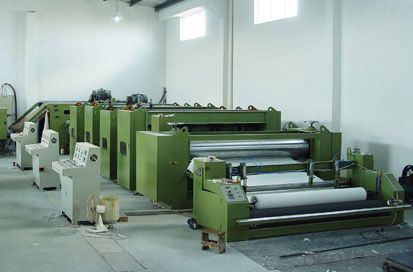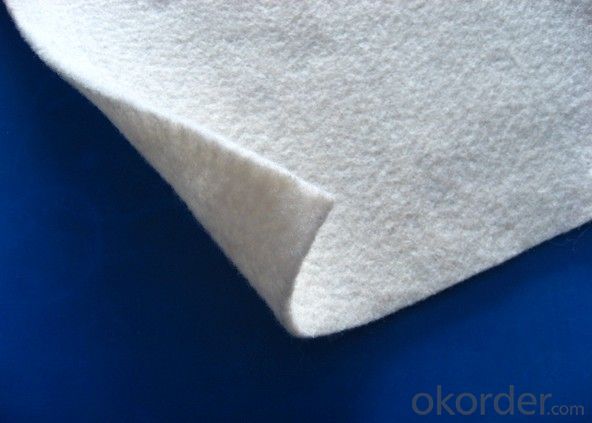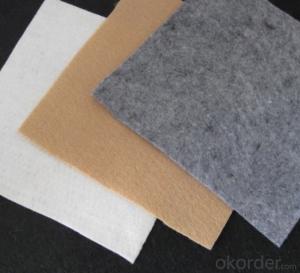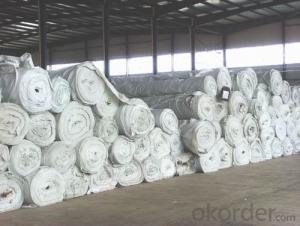Woven Geotextile for Pet Non Woven Applications in River Construction
- Loading Port:
- Qingdao
- Payment Terms:
- TT OR LC
- Min Order Qty:
- 10000 m²
- Supply Capability:
- 500000 m²/month
OKorder Service Pledge
OKorder Financial Service
You Might Also Like
Pet Non Woven Geotextile Images




Pet Non Woven Geotextile Specification:
Specification of nonwoven geotextile bag | |||||
weight g/m2 | 110g | 130g | 150g | 300g | 450g |
Breaking strength KN/M≥ | 6 | 10 | 12 | 19 | 25 |
Elongation at break ≥ | 60% | 60% | 60% | 60% | 60% |
CBR Mullen Burst Strength KN ≥ | 1.2 | 1.4 | 1.5 | 3.1 | 3.8 |
FAQ
We have organized several common questions for our clients,may help you sincerely:
Q1: How about your company?
A1:Our company are one of the largest geosynthetic products supplier in the world.We have the products experience more than 20 years.Already export to USA/Germeny/Australia/Zambia/Brazil etc.more than 20 countries.Almost 10years.Our products including Geocell/Fiberglass Geogrid/Geomembrane/Geotextile/Geonet etc.
Q2:Can you send samples to us ?
A2:Yes , free samples could be provided , but customer need pay for the freight cost .
After order placed , the freight charge could be refund .
Q3:What’s your Payment term ?
A3:T/T , L/C , Western Union,Paypal ...
Q4:What’s your manufacture process time ?
A4:Usually within 20 days
- Q: What are the different geotextile testing methods?
- There are several geotextile testing methods that are commonly used to evaluate the performance and quality of geotextile materials. Some of these methods include tensile strength testing, puncture resistance testing, tear resistance testing, bursting strength testing, and water permeability testing. These tests help determine the suitability and durability of geotextiles for various applications such as soil stabilization, filtration, and erosion control.
- Q: What are the different factors that affect the performance of geotextiles?
- There are several factors that can affect the performance of geotextiles, including the type and quality of the material used, the thickness and weight of the geotextile, the installation method and conditions, the environmental factors such as temperature and moisture, and the load and stress placed on the geotextile. Additionally, the compatibility between the geotextile and the surrounding soil or aggregate material can also impact its performance.
- Q: Are geotextiles suitable for use in erosion control socks?
- Yes, geotextiles are suitable for use in erosion control socks. They are specifically designed to prevent soil erosion by providing a protective barrier and promoting water infiltration. Geotextile erosion control socks effectively control sediment runoff and stabilize slopes, making them an ideal choice for erosion control projects.
- Q: What are the key considerations for geotextile installation in high wind areas?
- The key considerations for geotextile installation in high wind areas include selecting a high-strength geotextile material, ensuring proper anchoring and securing methods, evaluating the site's wind load potential, and implementing effective quality control measures to ensure the installation's durability and long-term performance.
- Q: Can geotextiles be used in tunnel construction?
- Yes, geotextiles can be used in tunnel construction. Geotextiles are often used as a reinforcement material in underground structures like tunnels to provide stability, prevent soil erosion, and improve drainage. They can be used in various applications such as tunnel lining, separation of different soil layers, and filtration of water or gases. Geotextiles offer numerous benefits in tunnel construction, including increased safety, reduced maintenance, and enhanced durability.
- Q: What are the advantages of using geotextiles in mining operations?
- There are several advantages of using geotextiles in mining operations. Firstly, geotextiles can provide effective separation and filtration of materials. They can prevent the mixing of different layers of soil and rock, ensuring structural stability and reducing the risk of contamination. Additionally, geotextiles can act as a barrier to prevent soil erosion and control sedimentation, which is crucial in mining sites where large amounts of soil and debris are generated. Moreover, geotextiles can enhance the overall performance and longevity of mining infrastructure such as roads, slopes, and tailings dams by improving their drainage and reinforcing their strength. Overall, the use of geotextiles in mining operations promotes environmental protection, reduces maintenance costs, and improves operational efficiency.
- Q: Are geotextiles poisonous?
- Geotextile is not toxic, the production of geotextile raw materials are polyester (PET) or polypropylene (PP). Polyester and polypropylene have become daily necessities. Many of the mineral water bottles are also produced by PET and PP raw materials.
- Q: How can we file in the Water Resources Department? I was doing hydraulic works with geotextiles, geogrids, gabion, gabbin.
- Water geotechnical engineering geotextile, geogrid, gabion, Geben network should belong to the geotextile material series, you can refer to the required record of the Department of Water Resources on the geotechnical industry for the record requirements. At present, the provinces and cities of the record requirements are not the same, you want to record in which provinces and cities will go to the provincial and municipal water conservancy department official website to see the specific requirements, the Internet will generally have publicity, you can call the consultation. The general information required for the record includes: business license, tax registration certificate, organization code certificate, national industrial production license, safety production license, ISO9000 / ISO certification, legal personality certificate, power of attorney, contract copy in recent years Three-year financial audit report, the company's basic household certification.
- Q: Can geotextiles be used in erosion control blankets?
- Yes, geotextiles can be used in erosion control blankets. Geotextiles are often used as a material in erosion control blankets to provide stabilization and reinforcement against soil erosion. They help to prevent sediment runoff and promote vegetation growth, making them effective in erosion control applications.
- Q: Permeable geotextile how many square
- Geotextile with GB and non-standard, do not know how many grams you want, the price from a few hair to a few pieces have.
Send your message to us
Woven Geotextile for Pet Non Woven Applications in River Construction
- Loading Port:
- Qingdao
- Payment Terms:
- TT OR LC
- Min Order Qty:
- 10000 m²
- Supply Capability:
- 500000 m²/month
OKorder Service Pledge
OKorder Financial Service
Similar products
Hot products
Hot Searches
Related keywords


































